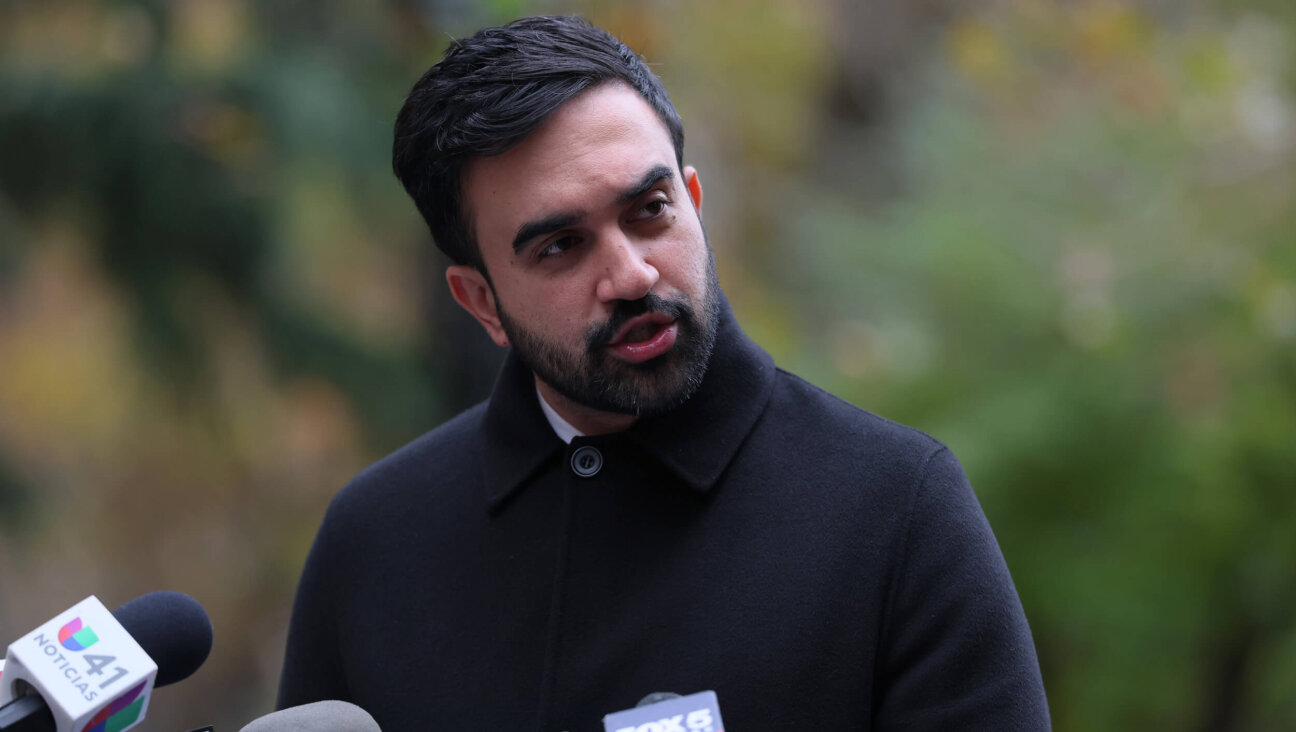How a Mother Overcame a Malady
Kathryn Goldstein* of Monroe, N.Y., has no medical background, but this proud Orthodox mother of 11 has become an expert on one Jewish genetic disease. Three of her children were diagnosed with the genetic disorder, congenital hyperinsulinism.
In 1978, after a healthy full-term pregnancy, Kathryn gave birth to Amanda, her seventh child. Two hours after Amanda was born she began to turn blue and experience seizures — common signs of low blood glucose in infants. The doctors gave Amanda a blood-glucose test and results showed that her blood glucose level was zero. (Normal blood sugar is 70 to 100mg/dL.)
Within her first few weeks of birth, Amanda suffered minor brain damage and was transferred to Brookdale Hospital in Brooklyn, where she remained for nine weeks. There, the doctors tried several medications, and Amanda received an intravenous dextrose (sugar) solution to keep her blood glucose normal.
Unfortunately, her glucose level remained unstable, and the Goldsteins transferred Amanda to Children’s Hospital of Philadelphia, an institution where doctors specialize in this disorder. The doctor’s diagnosed Amanda with congenital hyperinsulinism, or HI, sometimes referred to as nesidioblastosis or PHHI (persistent hyperinsulinism hypoglycemia of infants). Kathryn said that doctors there told her: “If she would have been here right away, she would have had surgery, and she would have avoided all the brain damage.”
HI is a rare genetic disease affecting 200 to 400 newborns a year in the United States, according to Dr. Charles Stanley, chief of endocrinology at Children’s Hospital of Philadelphia. The disease disproportionately affects Ashkenazi Jews, who make up less than 3% of the American population, but 5% of the number of infants diagnosed with HI annually. HI is a disorder in which insulin- containing beta-cells of the pancreas secrete too much insulin, causing low blood glucose levels. Beta-cells normally secrete just enough insulin to keep the blood glucose normal. With HI, the secretion of insulin is not regulated correctly, which causes excess insulin secretion and low blood glucose. When an infant is born with HI, he or she must receive proper medical attention immediately in order to avoid brain damage.
There are two types of HI, “diffuse” and “focal,” according to Stanley. Diffuse HI affects half of the babies born with hyperinsulinism. Treatment often includes a medication called Octreotide, continuous dextrose and a pancreatectomy to remove up to 98% of the pancreas. The genetic defects in this type are inherited in a recessive manner, giving parents who are both carriers of the disease a 25% chance of having a child with the disorder. Focal HI is clinically identical to diffuse HI. However, Focal HI may be cured if the focal area is surgically removed, leaving the remainder of the pancreas, which is normal.
Amanda’s diagnosis was diffuse HI, and a week after being admitted to the hospital doctors performed surgery to remove 85% of her pancreas. Unfortunately it did not totally solve the problem. Her glucose level remained low. Additional support with feeding tubes was needed. “With the surgery, with the medication, with the feeding, she was still very low,” Goldstein recalled. Amanda was transferred to a ward at Kingsbrook Jewish Medical Center in Brooklyn at 6 months old. There, she received constant feedings, medical care and therapy.
“She was fed on the pump 24 hours, and if the feeding tube was out for more than 20 minutes she was out, too, and the sugar level dropped down to 30”(a dangerously low level), Goldstein said. Amanda continued to rely solely on the feeding tube. When Amanda was 3, her parents brought her home, where Goldstein took full care of her without any outside assistance. Goldstein struggled to wean Amanda off the feeding tube for several years.
Goldstein’s eighth child was born healthy. In 1983, Kathryn gave birth to her ninth child, Carrie, an HI baby. Carrie weighed 8 pounds, 12 ounces, at birth. “Unusually large birth weights varying from 9 to 11 pounds are often the first sign of a hyperinsulinism baby,” said Stanley of Children’s Hospital.
“I called Philadelphia right away and said, ‘Listen I have another patient for you!’” Goldstein said. After Carrie was transferred to the hospital at 2 days old, she had surgery. After five weeks with her glucose levels fluctuating, the Goldsteins saw little hope for improvement at the hospital and opted to take Carrie home.
Although Carrie had not suffered from brain damage and was mentally alert, she also needed additional support with feedings. The doctors wanted to put Carrie on an overnight feeding tube consisting of sugar water. Goldstein recalls doctors saying, “She is going to be fine, you don’t have to worry and you’re going to be fine; you’re going to sleep at night,” but Goldstein opted not to adhere to doctors’ orders. She did not want Carrie to rely on the feeding tube as Amanda had.
“The first one went on the tube completely, and once she was on the tube, she got attached. The second one was a poor eater to begin with, and if she received a feeding tube, she for sure wouldn’t eat anything by mouth. I was literally her human pump. Every half an hour at night, I used to get up and feed her a little bit, even a few sips. I took her blood sugar level; that’s how I did it for years.”
Her tenth child was healthy. In 1990 Goldstein gave birth to her eleventh child, Danny, who was also diagnosed with HI. “I went through the same process again with Danny,” she said.
Doctors did not think it could be done at home. “Mrs. Goldstein took the responsibility of trying and, with a lot of work, succeeded in managing her children at home. She deserves a lot of credit for having the strength and courage to have made it work — not in opposition to her doctors, but beyond their expectations,” Stanley said.
Today, all three children are eating normally and live vibrant lives. Amanda resides at a special-needs home and visits her parents frequently. Carrie recently married, and Danny attends junior high school.
“I took a risk, and we came out fine. I went on ‘mother’s instinct,’” Goldstein said.
- Names have been changed to protect privacy of the family.














